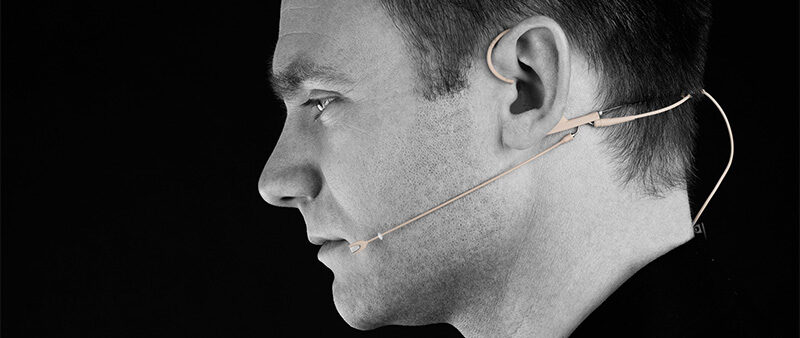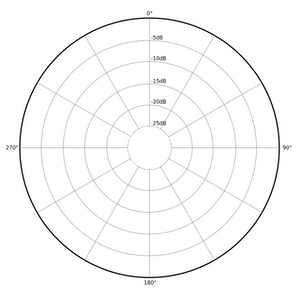Comparing Lav vs Headworn and Omni vs Directional Mics
At TC Furlong Inc., we handle a significant number of wireless microphone system quotes for rental and purchase. Along with each of these, we typically walk customers through the myriad of choices including price points, sensitivity, attachment options, brands, antennas, etc.
Two of the biggest questions for customers when assembling a bodypack worn wireless system is “Lavalier or Headset” followed by “Omnidirectional or Directional.” Most of the time, the decision is not cut and dry, and each has their special application. Below is an explanation of how we typically work through the process, but first, here are some definitions:
Definitions
Lavalier Mics
Also known as “Lavs.” These are small (miniature) mics that often clip to a lapel, tie, or other piece of clothing. The goal with these is to be small and discreet. They commonly come in two colors, black and beige. The Black is often used for clipping to clothing and the beige is often used in theatrical settings. Because they are small, they can also be attached to an actor’s wigs or within scenery for certain theatrical applications.
Headworn Mics
These mics, also known as headset or earset mics, have similar capsules to lavaliers but are attached to a boom and are designed to be worn around the head. This form factor allows the capsules to be positioned as close to the users mouth as possible. The typically come with single-ear or dual-ear attachments and are available in a palette of colors to approximate skin tones.
Omnidirectional
This mic will pick up audio sources (ie. the presenter) from all directions. They have little to no “handling noise” (the incidental sounds of a mic cable brushing up against the presenter). They also have the most “natural” sound. That is, they reproduce the sound the most accurately, are not susceptible to wind noise, and are not as sensitive to positioning. On the downside, they are more prone to feedback and can easily pick up unwanted or environmental noise.
Directional
This mic will pick up audio sources only in one direction. These come in several forms, but most often they have the pickup pattern of “cardioid” or “hyper-cardioid”. While these mics are great for rejecting unwanted environmental sound (ie. crowd noise), they are more vulnerable to handling noise and wind (including the popping sounds of P’s or even breath sounds). They must be positioned carefully and are sensitive to changes in position of the mic relative to the source.
Which mic is best for you?
Lav vs. Headworn
Our typical recommendation for live sound applications is a headworn microphone. It has the ability to be placed close to the mouth in a static position and allows users to achieve the most consistent sound of a presenter. The headworn does require more adjustments to position correctly, but once it is placed, the consistency you achieve will be worth it. This is not only great for seasoned veterans in the industry but also for church volunteers.
Often the amount of physical activity of the presenter will direct your decision for a dual-ear or single-ear attachment. A dual-ear, headset model tends to stay in place better while the presenter walks (or dances) around a stage. With the single-ear, earset version, you will find most people will use a small piece of medical tape to help secure it.
If the presenter isn’t comfortable with a headset or prefers that the mic be more discreet, the lav might be the better option. Placement with these can be just as challenging to get right and often it boils down to the particular clothing the presenter is wearing. For instance, some low-cut dresses can be challenging to find a functional placement.
One of the plus sides to the lav is the ease and quickness that you can place it. If you have multiple presenters but only one lav, the changeover can be much quicker than a headset. The downside of a lavalier placed on a presenter’s chest is that audio levels will vary as the user moves their head.
In the end, it does come down to a compromise between aesthetics and engineering, so when making the decision, it is worth weighing the preferences of the presenter with the technical requirements of the production.
Omni vs. Directional
After you have made the decision on a lav or headworn style mic, you will need to decide whether to use an Omni or Directional capsule. Sometimes people make the mistake of thinking directional is always better, but this is not always true.
A good place to start when deciding is to know if there will be any sound reinforcement. If the application is a webcast, video recording, or broadcast, an omni would likely be a great choice. In these cases, there is no fear of feedback or rejection of other sources near the presenter, and the omni capsule will provide an open and natural sound.
Directional mics are best used when you have a ‘less than ideal’ situation and work well in on-stage applications. For instance, directional mics work better for a church or venue with a thrust stage that puts the presenter in front of the PA, or in a very reverberant space with a lot of ambient noise. It is important to keep in mind that placement of a cardioid element is vital and to pay careful attention to which direction the microphone is picking up the audio.
Conclusion
Choosing the right microphone is important to the success of your event. There are hundreds of variations and brands on the market and in our inventory, and these are just some of the factors to consider when making a decision. Our team is happy to discuss in more detail on a case by case basis to help guide you through your rental or purchase decisions.
For questions about the many lavalier and headworn microphone options in our rental stock, contact the rental team at 847-367-9588 or email at rentals@tcfurlong.com.
For questions about purchasing a microphone or wireless system, contact the sales team at 847-367-9588 or email at sales@tcfurlong.com.
For more technical tips, sign-up for our email newsletter!




